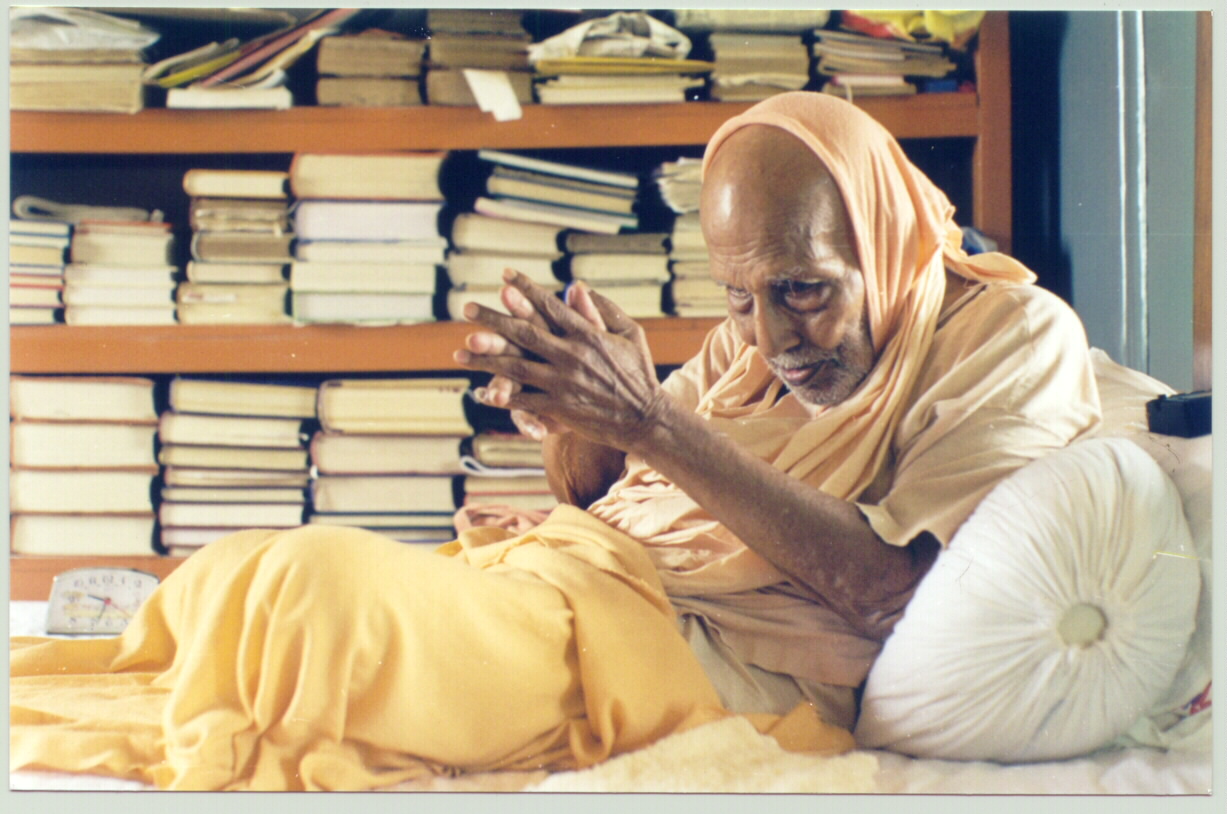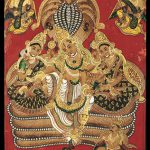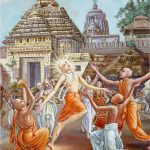by Srila Bhakti Pramode Puri Goswami, from Art of Sadhana.
Hari or Krishna is the pratyag-atma, the innermost soul of every individual, and is only understandable through bhakti, or devotion.
tvam pratyag-atmani tada bhagavaty ananta
ananda-matra upapanna-samasta-saktau
bhaktim vidhaya paramam sanakair avidya-
granthim vibhetsyasi mamaham iti prarudham
“By engaging in intense devotion to the Supersoul, the Supreme Lord who is infinite, defined by joy alone, and in whom all potencies are present, you will slowly cut the tight knots of ignorance based on the concepts of ‘I’ and ‘mine’.” (Srimad Bhagavatam: 4.11.30)
Brahman is said to be unknowable, ineffable, unmanifest and imperceptible by the material senses. Even so, it must not be said that He is completely unattainable. If we think that He can never be attained, then we will lose hope, and that is a serious impediment to ever taking up devotional service. For this reason, Baladeva quotes a line from the Kaivalya Upanishad: sraddha-bhakti-dhyana-yogad avaiti—”One can have direct knowledge of Him, through the discipline of faith, devotion, and meditation.”
Baladeva further explains,
“Faith is firm belief; devotion is a reference to numerous devotional practices beginning with hearing; and meditation means thinking of Brahman uninterruptedly—one’s thoughts being like a stream of oil. The word yoga in the text means that the discipline combines all three of these practices. The word avaiti, ‘he knows’ means to have saksatkara—direct perception or experience of Brahman.” (Govinda-bhasya).
In the Bhagavad-gita, Krishna says that he can only be known by devotion (bhaktya mam abhijanati). He confirms the same to Uddhava in the Bhagavatam 11.14.21: bhaktyaham ekaya grahyah.
The Mathara-sruti further glorifies bhakti:
bhaktir evainam nayati, bhaktir evainam darsayati
bhakti-vasah purusah, bhaktir eva bhuyasi
“All these texts confirm that although the Lord is inconceivable and unmanifest, devotion has the power to reveal his form.”
A well-known aphorism from the Vedanta Sutras (3.2.24) api samradhane pratyaksanumanabhyam—also broaches the same subject. The sutra arises in the context of the possible objection that the Supersoul or the Param Brahman cannot be perceived by sight and the other senses. The first word of the aphorism, api, specifically condemns the idea. If one is properly engaged in devotional practices (samradhane), the Lord becomes accessible even to our senses. This is confirmed by the Sruti (pratyaksa) and the Smriti (anumana).
In the Govinda-bhasya commentary to this sutra, Baladeva quotes two verses from the Sruti and two from the Bhagavad-gita (Smrti) to support the idea that certain devotees fixed in knowledge do indeed see the Lord:
paranci khani vyatrnat svayambhus, tasmat paran pasyati nantaratman
kascid dhirah pratyag-atmanam aiksad, avrtta-caksur amrtatvam icchan
“The Self-born Creator pierced holes facing outward (making eyes in the body); therefore men look outward and do not see the soul within. Desiring immortality, some wise men turn their eyes inward and see the atman, who dwells within.” (Katha Upanishad, 2.1.1)
na caksusa grhyate napi vaca, nanyair devais tapasa karmana va
jnana-prasadena visuddha-sattvas, tatas tu tam pasyati niskalam dhyayamanah
“Though he cannot be seen by the eyes, described by words, revealed by the gods, or understood through austerities or rituals, one whose very being has been purified by [scriptural] knowledge can see him in his entirety by meditation.” (Mundaka Upanishad, 3.1.8)
In the Bhagavad-gita also, Krishna further confirms the possibility of a direct vision of the Lord:
nahham vedair na tapasa, na dena cejyaya
sakya evam-vidho drastum, drstavan asi mam yatha
bhaktya tv ananyaya sakya, aham evam-vidho ‘rjuna
jnatum drastum ca tattvena, pravestum ca parantapa
“I cannot be seen in the same way that you have seen me simply through a study of the Veda, nor through serious penances, charity, or worship. O Arjuna, it is only through undivided devotional service that I can be known in this way, that I can be seen, and indeed, entered into.” (Bhagavad-gita, 11.53-54)
The phrase “in the same way” (evam-vidho) in these verses refers to Krishna’s human form. Baladeva concludes: “Therefore, by the perfect performance of devotional service (samyag-bhaktya), the Lord can indeed be perceived. At this time, the eyes and the other senses are saturated with devotion and this gives them the ability to know him.”
Once a person (the “wise individual” or “dhira” in the Katha Upanisad verse quoted above) stops seeking the satisfaction of his own senses, he attains love of Krishna, in which he seeks only the pleasure of Krishna’s senses. In the context of Baladeva’s comments on the Vedanta Sutra, such a person obtains divine sight when his eyes are smeared with the unguent of love. This gives him the qualification to behold Syamasundara’s divine form of unparalleled beauty.











